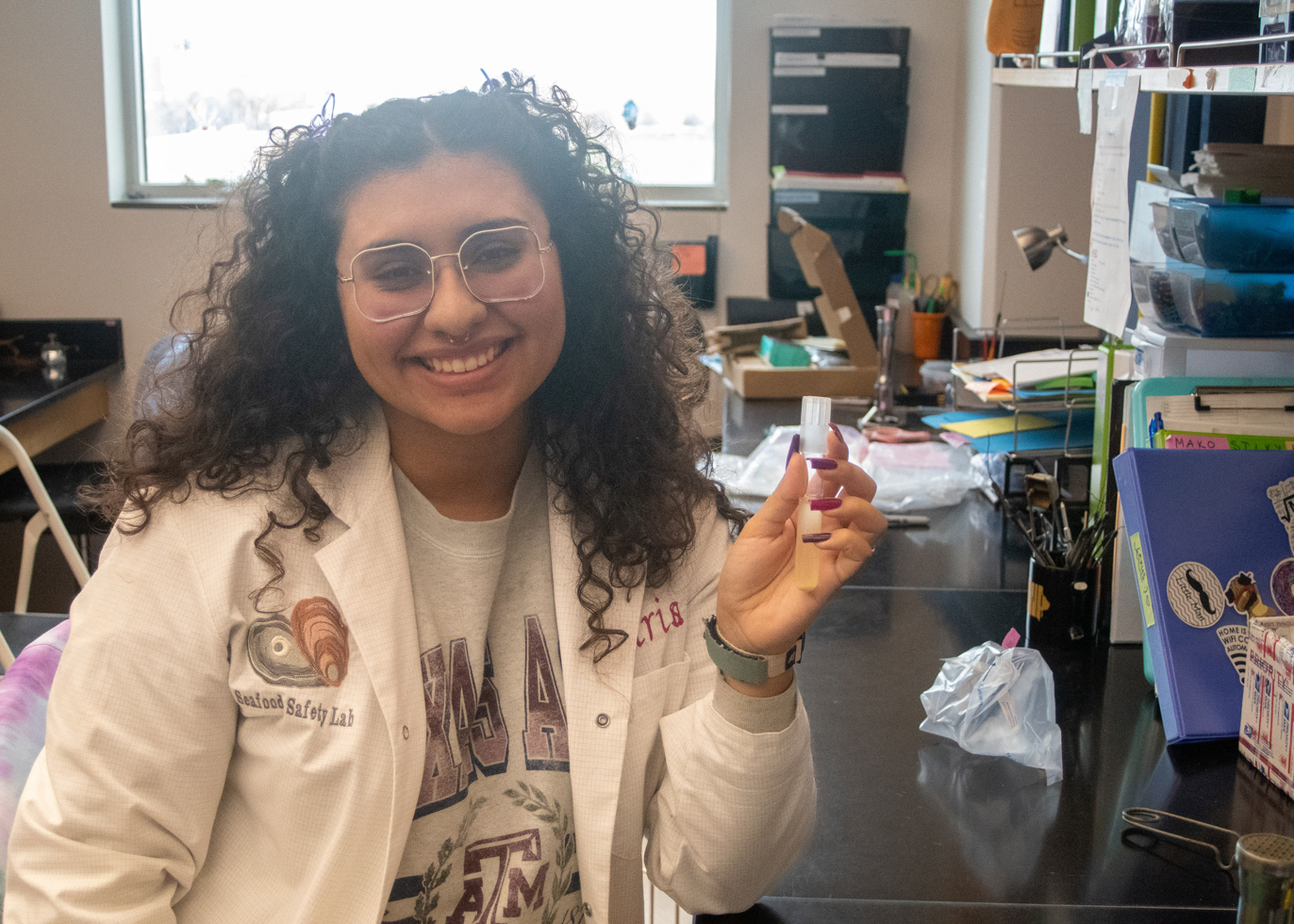Seafood Safety Lab Keeps Food Poisoning Off The Menu
September 13, 2023
Tweet
By Taylor Bounds
Texas A&M University at Galveston is home to the Seafood Safety Lab (SSL), the only non-Food and Drug Administration (FDA) lab in the country approved by the FDA and National Shellfish Sanitation Program (NSSP) to analyze shellfish for two of the most common bacterial pathogens: Vibrio vulnificus and Vibrio parahaemolyticus. For over three decades, the lab has monitored bacteria found in shellfish, seawater and non-potable water from Galveston Bay.
"Both of these bacteria can cause severe food poisoning, and they thrive in the warmer coastal waters," said Mona Hochman '94, a lecturer in the marine biology department and lab coordinator for the SSL.
Although Vibrio vulnificus is sometimes branded as a "flesh-eating" bacteria, that is not the case, says Hochman. It can, however, cause severe illness and even death in people with pre-existing conditions. Vibrio parahaemolyticus can cause unpleasant gastrointestinal distress, but does not typically cause illness as extreme as Vibrio vulnificus.
The majority of Vibrio testing the Seafood Safety Lab conducts is in oysters, aimed at reducing the levels of pathogenic bacteria.
"All oyster processors in the country who individually quick-freeze, gamma-irradiate, pasteurize or treat oysters with high hydrostatic pressure use the lab's services to ensure their product is safe, as required by the NSSP," said Hochman. "The data generated by the lab is used by multiple states across the country for regulatory action under the NSSP Guide for the Control of Molluscan Shellfish."
Closer to home, the SSL provides volunteer, course credit and paid student worker positions for undergraduate students at the Galveston Campus. The work includes both field collection of oysters and water, as well as laboratory methods working with the bacteria. "Students are involved in every step of preparation, testing and data collection," said Marisa Gonzalez ‘24, an undergraduate student employee for the SSL.
Students who work in the SSL gain valuable experience that is highly transferable to a vast array of scientific fields, and Gonzalez says that working in the lab gave her the opportunity to fine-tune her laboratory skills in a professional environment while helping protect the community from foodborne illness.
After graduation, Gonzalez plans to attend UTSA for graduate school. She says that through the SSL, "I have met some amazing mentors who have helped me prepare for my future and apply for grad school.”
In cooperation with the Texas Department of State Health Services, data produced by the SSL provided the state an opportunity to restrict oyster harvesting from certain areas of the bay with high bacterial counts in the hopes of reducing Vibrio infections.
"While the majority of our microbiological work is with bacteria found in oysters, we also test water samples for Enterococcus and Escherichia coli. These are the same bacteria tested for by the General Land Office for Beach Watch," says Hochman.
The Telemundo network interviewed Hochman in June to discuss the GLO's recent findings of Enterococcus along the Galveston beachfront. The SSL also periodically tests the water for the Gulf Center for Sea Turtle Research hospital for these same aquatic bacteria.
The Seafood Safety Lab helps protect the health and safety of all seafood enjoyers. The next time you sit down with a plate of oysters, you can thank the team at the SSL for their work, keeping you from getting sick.
###
Media contact:More:
Read more about Health & Environment
Read more about TAMUG Research
Read more about Science & Technology
Read more about Foundational Sciences
Read more about Marine Biology
Read more about Marine Sciences
Read more about Student Life